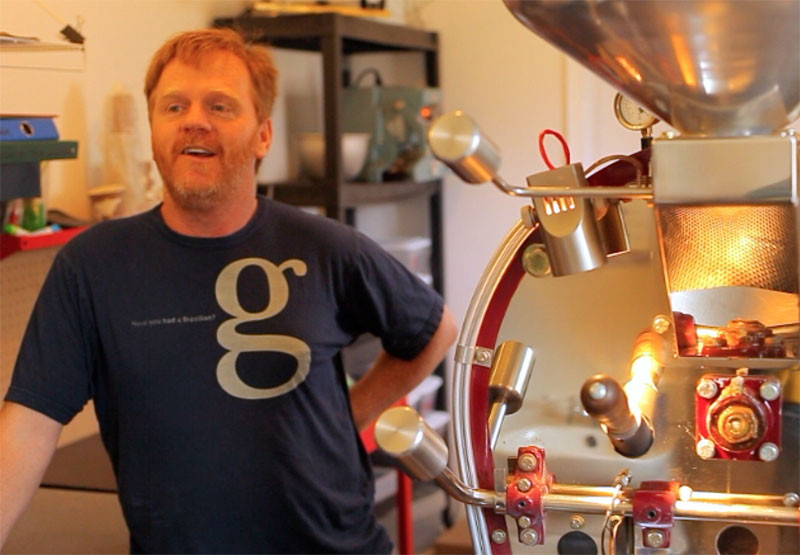Saving coffee, one delicious cup at a time
Manitoban bringing the best to the mugs of java lovers
Derryl Reid is helping Manitobans get the most from their coffee.
In a market that has more brands than bags have beans, Reid’s Green Bean Coffee Imports company concentrates on quality to promote its coffee. Quality to Reid means knowing where the beans come from and how to brew the best cup you can.
Located in Clandeboye, Man., Reid’s house is his roastery. He operates a 107 square-foot Diedrich’s roaster in his back porch, and does all the delivering to Winnipeg himself – including to the University of Winnipeg, where Green Bean is served at Diversity Food Services and at Soma Café.
But more important than the taste of the coffee, according to Reid, is the appreciation.
“We treat our coffee like wine,” he said. “While wine has 400 flavour characteristics, coffee has 800.”
What this means is that coffee has many notes of flavour that Reid feels aren’t fully appreciated in the average cup.
“For every bean, there is a different roasting technique,” he said.
It depends when and where the beans were picked. Reid has precise formulae he uses to make sure he gets the most flavour from his beans.
Reid’s purpose is to educate as well as distribute. He wants to make sure that people can fully appreciate the work he puts into his product.
“A lot of coffee is dead before it’s served in the restaurant,” he said. “Especially if it’s frozen first.”
He credits poor roasting methods and machines for creating flat, boring coffee, rather than blaming the beans themselves.
“The best, easiest way to brew for students is to use a bodum (French press) with a medium roast.”
Medium roasts preserve the caffeine rather than dark roasts, which burn some of it off.
“ We treat our coffee like wine. While wine has 400 flavour characteristics, coffee has 800.
Derryl Reid, founder, Green Bean Coffee Imports
Not satisfied with ordinary drip-filters, Reid prefers to use a vacuum filter for his own mug. Vacuum filters are much slower than using a filter, but also don’t contaminate the flavour of the grind with bleached paper, he said, before adding:
“Convenience is killing coffee.”
Reid believes good coffee should take time to make. He said that ultra-fast and sleek machines like Tassimo are the scourges of the industry.
While content to deliver his coffee in his car, Reid hopes to open a café in Winnipeg within the next year.
“If I open a café, you’d never see whipped cream on anything.”
He doesn’t hold a grudge for specialty coffees, though. In fact, he has a lot of respect for Starbucks in particular.
“They’ve done a lot for coffee culture and the education.”
Reid insists people be aware of what they’re drinking. He cautions that even the most expensive coffee can be suspect, like the kopi luwak beans that get picked out of animal droppings. The digestion process of the Luwak, a cat-like animal found in South-East Asia gives the beans a unique flavour when roasted.
Reid said that this is true when the animals are in the wild and find the right quality coffee berries to eat, but when they are kept on a farm, the beans aren’t the same quality.
The coffee Reid makes is fair trade by Transfair, and while not certified yet, he ensures as much organic product as possible.
Published in Volume 64, Number 26 of The Uniter (May 27, 2010)







